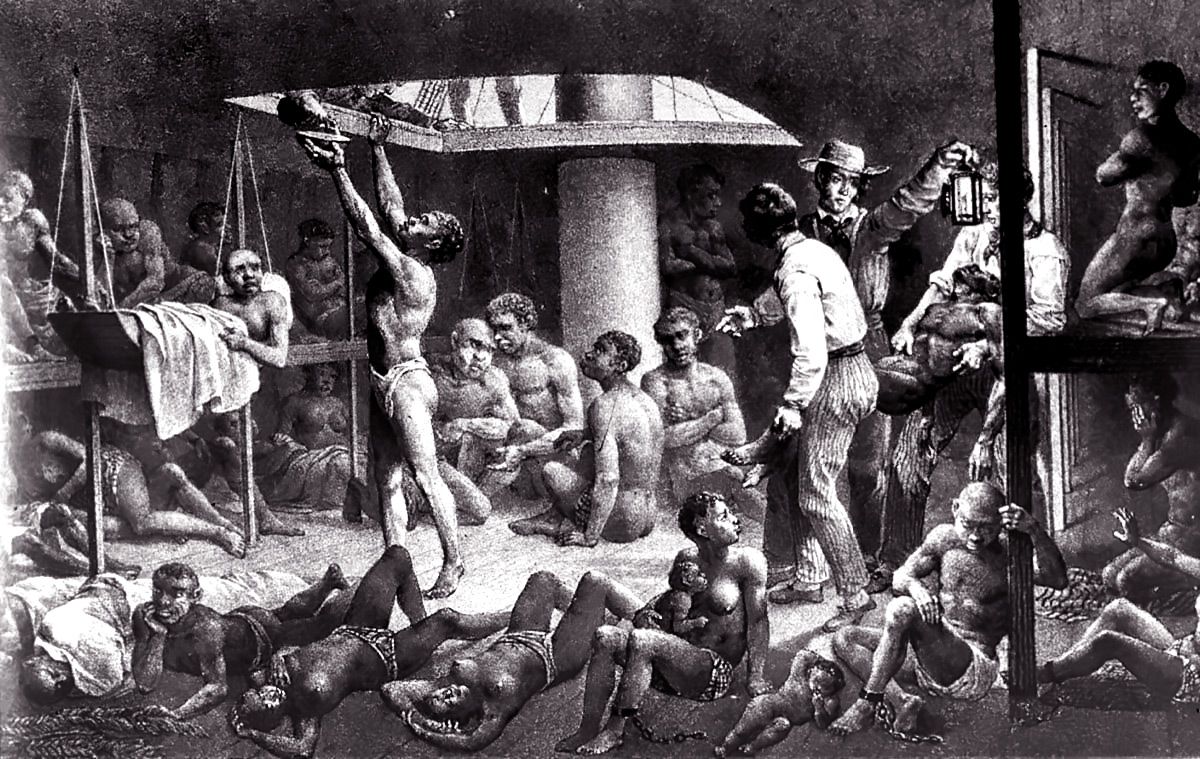During the horrifying Slave trade, Africans that were captured and forced onto ships to be sold into bondage in the Caribbean, parts of Europe and the United States of America experienced some of the worst treatments ever.
For one, captured Africans were not allowed to wear enough clothes on the ships so that space could be created to pack them in the dark small and poorly ventilated rooms. They were also only allowed to stretch themselves once in a while during trips that could last more than a month. These Africans could not take baths and had to ease themselves in the same rooms they slept.

A major issue they also had to deal with and endure on the ships was the lack of food. They were given just enough food to keep them alive until they reached their new destinations.
Why did slaves put rice in their hair
Many slaves who managed to survive and land on coffee, cotton or sugar plantations still struggled for food. Their masters did not allow them to eat much or gain access to foodstuff or enough money to purchase it.
According to history, descendants of enslaved Africans in Suriname trace their ancestry to West Africa and parts of Central Africa.

Today, several foods such as local rice and Okro found in Suriname have been identified to have come from Africa and were carried by slaves into their new homes.
But if slaves were suddenly captured, how were they able to have enough time to pack some home-grown food with them and in what way?
According to in-depth research conducted by Judith Carney, a rice historian and geography professor at the University of California, Los Angeles, revelations indicate that some slaves were fully prepared to be captured or had enough time to store the grains on their body before embarking on the never-to-return trips.
In her book Black Rice, Professor Carney gives a full account of the dark and hard grained rice that came from West Africa and how slaves taught their white masters how to grow and preserve it years before rice from Asia became a preferred option.

In order to have something to keep them going, captured Africans often swallowed okra seeds and rice. According to oral history, these seeds could be re-picked and swallowed when it came out in one’s feces.
Although it may not be well reported in books or academic findings, rice found it way to the Caribbean by being kept in women’s braids.
Rice in hair black history
According to several articles, including Professor Carney’s Black Rice, African women braided their hair and hid rice seeds as well as other grains in cornrows. The braiding technique was very popular among Africans which was taken into the Caribbean especially among the Maroon communities.
Mothers often braided the rice into their children’s hair to have something to survive on while on the slave trips or escaping from raided communities in Africa.
Also hidden in hair are black eyes beans, small cassava cuttings, maize and other grains depending on how thick the hair was.
During the years of several slavery rebellions in the Caribbean, the practice was taken up by the Maroons who escaped the plantations to start their own settlements where they grew food and lived independently.
Today, the braiding technique that was used to hide grains, known as flat braids or flat cornrows, remains a simple but trendy look among black women around the world.










